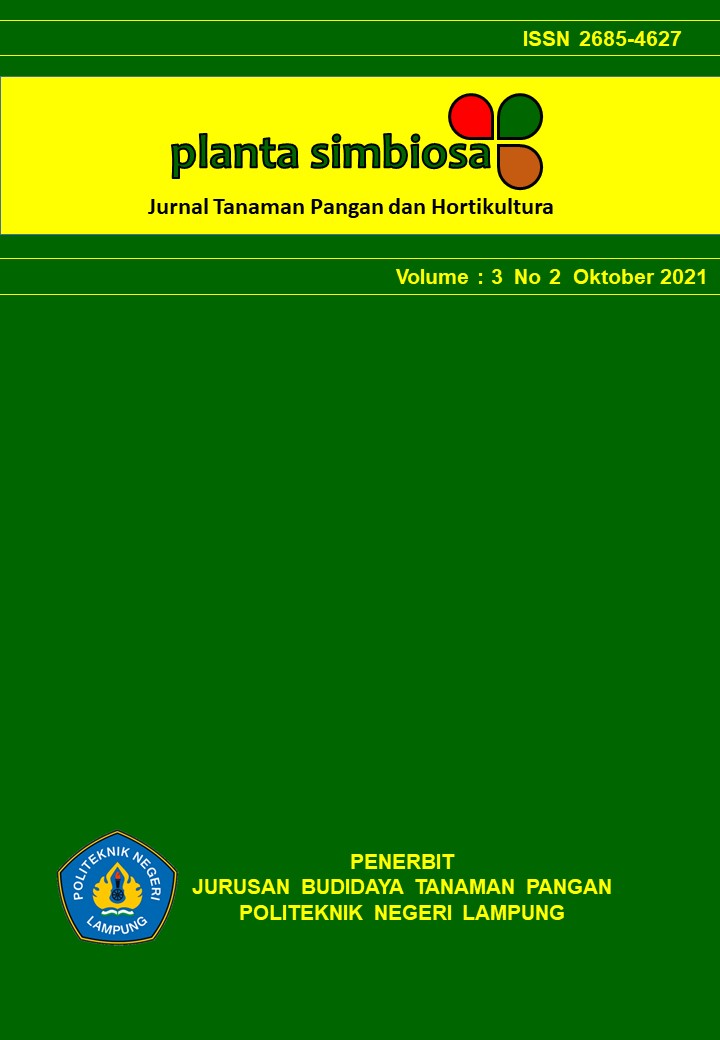Uji Konduktivitas Benih pada Beberapa Genotipe Mutan Kedelai Hitam Generasi Mutan ke Tiga (M3)
DOI:
https://doi.org/10.25181/jplantasimbiosa.v3i2.2265Abstrak
Pada tahap seleksi pada pemuliaan dengan induksi mutasi iradiasi sinar gamma, dibutuhkan benih hasil generasi sebelumnya untuk dapat ditanam di lapangan agar memperoleh generasi mutan selanjutnya. Benih sebelum ditanam telah mengalami periode penyimpanan, selama masa penyimpanan jika kondisi suhu, kelembaban dan wadah penyimpanan tidak tepat maka akan mempengaruhi viabilitas dan vigor benih yang dapat menurunkan daya berkecambah benih di lapangan. Pengujian untuk mengetahui vigor benih dapat dengan melakukan uji konduktivitas/Daya hantar listrik (DHL). Tujuan penelitian ini adalah untuk mengetahui nilai konduktivitas tiap genotip mutan generasi ke tiga dan persentase daya berkecambah benih kedelai hitam selama periode simpan. Penelitian ini menggunakan rancangan acak lengkap (RAL) non faktorial yang dengan 10 Genotip mutan dan 1 Kontrol (tanpa iradiasi), dan setiap perlakuan di ulang sebanyak empat kali. Variabel pengamatan adalah Konduktivitas/Daya hantar listrik, Daya berkecambah, Kecepatan tumbuh, Keserempakan tumbuh, Indeks vigor, dan Potensi tumbuh maksimum. Berdasarkan uji konduktivitas/DHL, genotip dengan nilai Konduktivitas/DHL tinggi maka daya berkecambah memiliki persentase rendah, namun persentase daya berkecambah masih di atas 80% seama periode simpan, sehingga diharapkan masih memiliki kemampuan berkecambah tinggi di lapangan. Kata Kunci: Daya hantar listrik, Kedelai hitam, dan Konduktivitas.Unduhan
Data unduhan belum tersedia.
##submission.downloads##
Diterbitkan
2021-10-31
Cara Mengutip
Andini, S. N. ., Sari, M. F., Septiana, S., & Pradana, O. C. P. (2021). Uji Konduktivitas Benih pada Beberapa Genotipe Mutan Kedelai Hitam Generasi Mutan ke Tiga (M3). J-Plantasimbiosa, 3(2), 1-6. https://doi.org/10.25181/jplantasimbiosa.v3i2.2265
Terbitan
Bagian
Artikel







